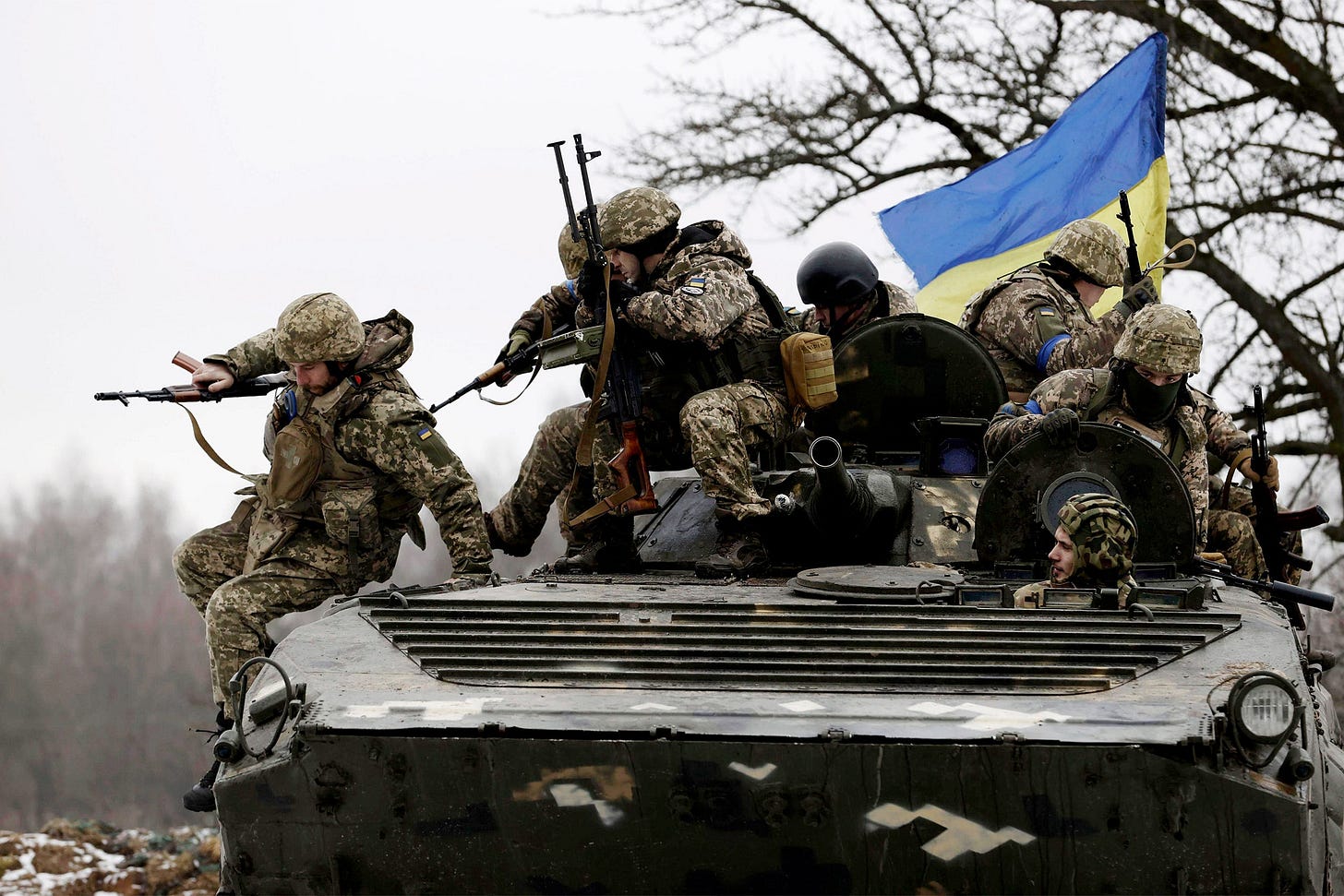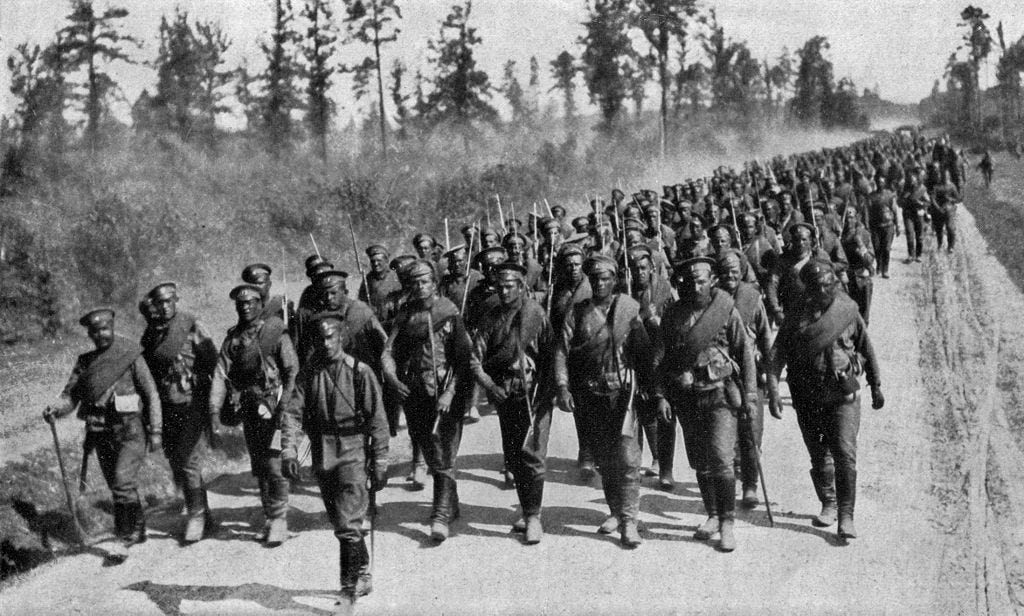There are two forms of war, attack and defense, and defense is much the stronger form. Also sprach Carl von Clausewitz, whose magus opus, Vom Kriege (On War) was published posthumously in 1832. Two hundred and ninety-one years on, his maxim remains valid—as the stalemate that has settled over the Russo-Ukrainian War so clearly demonstrates.
Clausewitz argued—and military history confirms—that defense is the stronger form of war because it compels the other side to assume the hazards of the initiative. Any attack, from the level of the rifle squad to that of the corps, is a risky undertaking. If the attack is well prepared, if the terrain and weather conditions are favorable, if intelligence concerning the enemy’s strength, dispositions and intentions are good, the odds favor a successful outcome. But if the plan is faulty, the terrain is difficult, the weather turns bad, the available intelligence is incomplete or misleading, the risks pile up and things can easily go wrong.
In the first phase of the Russo-Ukrainian War (February 2022-January 2023) the Russian side assumed the hazards of the initiative in what turned out to be unfavorable circumstances. Most fundamentally, the Russians overestimated their own combat capabilities while underestimating those of the Ukrainians. North of Kiev, their attack bogged down in difficult terrain against a most effective Ukrainian defense in depth. Bad weather and poor planning prevented the Russians from restarting their advance or even consolidating their gains, and ultimately they had to retreat under Ukrainian pressure. On 3 April 2022, the Institute for the Study of War’s “Russian Offensive Campaign Assessment” concluded:
Ukraine has won the Battle of Kyiv. Russian forces are completing their withdrawal, but not in good order. Ukrainian forces are continuing to clear Kyiv Oblast of isolated Russian troops left behind in the retreat, which some Ukrainian officials describe as “lost orcs.” Russian forces had attempted to conduct an orderly retreat from their positions around Kyiv with designated covering forces supported by artillery and mines to allow the main body to withdraw. The main body of Russian troops has withdrawn from the west bank of the Dnipro and is completing its withdrawal from the east bank, but the retrograde has been sufficiently disorderly that some Russian troops were left behind.
Much the same thing happened in the Kharkiv sector, where Russian attempts to capture that city failed. On other sectors of the front, the Russians gained some ground but achieved no decisive breakthroughs. Toward the end of the year, Ukrainian counterattacks retook significant territory in the western Kherson Oblast, around Kharkiv, and to the southeast of that city. By early 2023, a stalemate was reached. Russia’s offensive energy was exhausted. In many ways, the first phase of the war had been a rerun of the opening of an earlier war.
Thus was demonstrated the validity of Clausewitz’s maxim. Attacking, the Russians were burdened by multiple hazards. Standing on the defensive, Ukrainian forces were able to capitalize on those hazards, preventing the Russians from achieving their objectives and wearing down their combat power. But though this enabled them to transition to the attack in advantageous circumstances, they lacked the resources to deliver an immediate knockout blow. And meanwhile, the advantages of defensive war passed to the Russians.
The Russian Army made good use of the time afforded by the period of stalemate, covering its front in eastern Ukraine with a dense network of field fortifications. On the other side, the initiative—and its hazards—passed to the Ukrainians. . While not quite a mirror image of the war’s first phase, the Ukrainian spring/summer counteroffensive showed yet again the imbalance between attack and defense in war. The Ukrainians’ ability to capitalize on a situation favorable to them was dependent on Western aid in sufficient quantities to minimize the hazards of the initiative. But the aid provided was insufficient, so that the principal hazards for the attacker derived from numerical inferiority and material deficiencies.
The Ukrainians sought to fix the Russians in place by mounting offensive threats in various areas along the front, then making their main effort in one sector. But spreading their forces in that manner made it difficult to assemble a strike force for the main offensive—probably intended to take place in the western Zaporizhia Oblast, where a relatively short advance would disrupt the Russian Army’s supply lines.
Adding to their problems, the Ukrainians had not the resources to gain air superiority, nor sufficient long-range artillery systems to suppress the Russian artillery or interdict their rear communications. Ukraine’s liquid military assets were concentrated in the six or seven mechanized brigades that had been reformed and reequipped with modern Western tanks and other armored fighting vehicles. In the circumstances, to commit those forces to a major attack in the absence of adequate air and fire support risked disaster.
So the Ukrainians had to content themselves with attacks in company and battalion strength, slowly and methodically pushing through the Russian field fortifications. In the end, though some ground was gained, no decisive breakthrough of the Russian line occurred. And since the termination of the Ukrainian counteroffensive, a stalemate has once more settled in all along the front.
The pattern of the Russo-Ukrainian War reveals how the Biden Administration, which rushed to Ukraine’s support in the early days of the war, has botched the chance it was given to eliminate Putinist Russia as a threat to European security. In retrospect, it’s clear that the moment of balance arrived with the end of the war’s first phase. At that time, the original Russian plan—a swift military victory followed by the transformation of Ukraine into a Moscow-dominated puppet state—had failed. The Russian Army was on the back foot, having sustained a humiliating and costly defeat. That was the moment at which the United States should have committed itself to all-out support of Ukraine, providing the weapons and other resources that the Ukrainian forces needed to capitalize on the opportunity they’d fought so hard to create.
But instead of doing so, Biden & Co. blinked for fear of that illusory danger, escalation. If the US and NATO did too much to support Ukraine, that might so antagonize V. Putin that he’d freak out and pop a nuke or something. We were treated, therefore to the grimily comic spectacle of Joe Biden, field marshal’s cap askew, explaining that no, Ukraine didn’t need such things as jet combat aircraft, modern tanks, long-range tactical missiles. In reality, these were exactly the things that Ukraine needed to follow up on its defensive victories. Thanks to Biden’s dithering, however, those resources were provided tardily, after prolonged blathering and handwringing in Washington—too late to enable Ukraine to minimize the hazards of its spring/summer counteroffensive.
Napoleon admonished one of his generals to ask him for anything but time. Biden squandered the time—a matter of months—that Ukraine’s initial defensive victory had bought. And so now the war is entering its third year, with no end in sight and the very real possibility that thanks to domestic political infighting, US aid to Ukraine will dry up altogether. This is already a foreign policy disaster to rival the Afghanistan bugout and as I see it, things are only likely to get worse.







I hear so many people focusing on what Trump MIGHT do IF he became president.
We need to focus on the actions of the current president.
If we let Ukraine fall (however that is defined), a lot of countries will question our commitment (more than they already do).
But Ukraine isn't alone.
Lots of countries watching to see if we will back the Philippines in their defense of the outpost at Second Thomas Shoal in the Spratley Islands.
Come on Joe. We only need one or two victories.
The Republicans in the House of Representatives also need to find the courage to defy Trump and the MAGA wing of their party and pass an aid package for Ukraine.